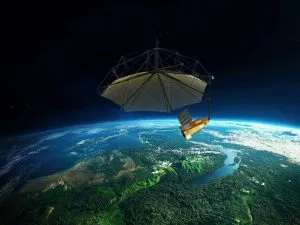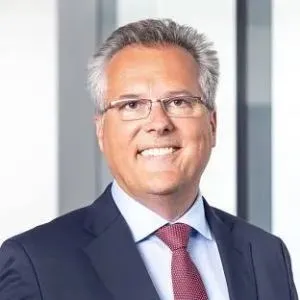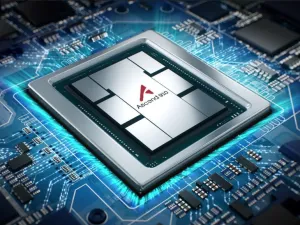Taking them in reverse order, according to Google Analytics…
 5. Biomass satellite mapping Earth’s forests in 3D with P-band SAR data
5. Biomass satellite mapping Earth’s forests in 3D with P-band SAR data
Biomass, a flagship satellite developed in the UK for the ESA, is set to become the first in the world to measure, in 3D, the condition of the Earth’s forests from space. Specifically, the satellite will assess “terrestrial carbon stocks and fluxes from an altitude of 666km above the Earth”. And it is due to launch today (10:15am BST, in French Guiana). Dubbed Biomass, the space craft has been designed and built in the UK by Airbus Defence and Space. Specifically, it will carry the first P-band (435 MHz) synthetic aperture radar (SAR) in space.
4. Celebrating the Women Leaders In Electronics Awards 2025
It was the Women Leaders In Electronics Awards 2025 last night and Electronics Weekly was very proud to host the event at One Moorgate Place in central London. Celebrating their second year year, the Awards recognise not only outstanding women who have made significant achievements, but also male allies, companies and teams who have made a positive impact throughout the electronics industry. Thank you, too, to Maggie Philbin, the science communicator and founder of the charity Teen Tech, for being an excellent host for the evening.
 3. Sievers to hand over to Sotomayor as NXP CEO
3. Sievers to hand over to Sotomayor as NXP CEO
Kurt Sievers, CEO of NXP Semiconductors, is to resign on October 28th and hand over to Rafael Sotomayor. Sievers joined NXP in 1995 and became CEO in 2020. He has been a member of NXP’s executive Kurt Sievers management team since 2009. He lead the strategy development for intelligent edge systems in automotive and Industrial & IoT. In 2019, he led the acquisition of Marvell’s Wi-Fi Connectivity business. Sotomayor is a 20 year veteran at NXP and president of NXP, overseeing the company’s business lines, manufacturing, China operations and R&D.
2. EU chip strategy needs a reality check says EU auditor
It is very unlikely that the EU will meet its target of a 20% share of the global market for microchips by 2030, says the European Court of Auditors. The EU’s Digital Decade strategy set a target for the Union to gain a 20% share of global production value in cutting‑edge and sustainable microchips by 2030. “The EU urgently needs a reality check in its strategy for the microchips sector”, said Annemie Turtelboom, the ECA Member in charge of the audit. “We are currently far off the pace. The 20% target was essentially aspirational.”
 1. Huawei chip to take on Hopper
1. Huawei chip to take on Hopper
Towards the end of May, Huawei is reported by the Wall Street Journal to be intending to sample its Ascend 910D AI processor which is aimed at competing with Nvidia’s 2022-vintage Hopper processor H100. Mass production of the 910D is reported to be scheduled for Q1 2026 on SMIC’s 7nm process. It is said that the 910D can be competitive for AI inference tasks with the H100, but does not match the H100 for AI training workloads. Nonetheless, at the rack-scale, Huawei’s 910C chip – the predecessor to 910D – could match Nvidia for performance.



